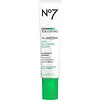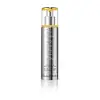What's inside
What's inside
 Key Ingredients
Key Ingredients

 Benefits
Benefits

 Concerns
Concerns

 Ingredients Side-by-side
Ingredients Side-by-side

Water
Skin ConditioningDimethicone
EmollientGlycerin
HumectantOctyldodecanol
EmollientAluminum Starch Octenylsuccinate
AbsorbentButylene Glycol
HumectantAmmonium Acryloyldimethyltaurate/Vp Copolymer
Dimethicone Crosspolymer
Emulsion StabilisingTocopheryl Acetate
AntioxidantAlcohol Denat.
AntimicrobialPhenoxyethanol
PreservativePanthenol
Skin ConditioningOphiopogon Japonicus Root Extract
Skin ConditioningBisabolol
MaskingAscorbyl Glucoside
AntioxidantXanthan Gum
EmulsifyingSodium Hyaluronate
HumectantPolysorbate 20
EmulsifyingParfum
MaskingDimethiconol
EmollientCaprylyl Glycol
EmollientSphinganine
Skin ConditioningSodium Benzoate
MaskingCitric Acid
BufferingDipropylene Glycol
HumectantEthylhexylglycerin
Skin ConditioningTetrasodium EDTA
Potassium Hydroxide
BufferingT-Butyl Alcohol
PerfumingDimethylmethoxy Chromanol
AntioxidantCamellia Sinensis Leaf Extract
AntimicrobialWater, Dimethicone, Glycerin, Octyldodecanol, Aluminum Starch Octenylsuccinate, Butylene Glycol, Ammonium Acryloyldimethyltaurate/Vp Copolymer, Dimethicone Crosspolymer, Tocopheryl Acetate, Alcohol Denat., Phenoxyethanol, Panthenol, Ophiopogon Japonicus Root Extract, Bisabolol, Ascorbyl Glucoside, Xanthan Gum, Sodium Hyaluronate, Polysorbate 20, Parfum, Dimethiconol, Caprylyl Glycol, Sphinganine, Sodium Benzoate, Citric Acid, Dipropylene Glycol, Ethylhexylglycerin, Tetrasodium EDTA, Potassium Hydroxide, T-Butyl Alcohol, Dimethylmethoxy Chromanol, Camellia Sinensis Leaf Extract
Water
Skin ConditioningPEG-8
HumectantDimethicone
EmollientCyclopentasiloxane
EmollientButylene Glycol
HumectantC12-15 Alkyl Benzoate
AntimicrobialGlycerin
HumectantTetrahydroxypropyl Ethylenediamine
Dimethicone Crosspolymer
Emulsion StabilisingAscorbyl Glucoside
AntioxidantPropanediol
SolventHydrogenated Lecithin
EmulsifyingAmmonium Acryloyldimethyltaurate/Vp Copolymer
C12-20 Alkyl Glucoside
EmulsifyingC14-22 Alcohols
Emulsion StabilisingCaprylyl Glycol
EmollientCaprylyl/Capryl Glucoside
CleansingCarbomer
Emulsion StabilisingCassia Angustifolia Seed Polysaccharide
Skin ConditioningCetyl Palmitate
EmollientCitric Acid
BufferingCyclohexasiloxane
EmollientDimethicone/Vinyl Dimethicone Crosspolymer
Skin ConditioningDimethylmethoxy Chromanol
AntioxidantErgothioneine
AntioxidantHexylene Glycol
EmulsifyingHibiscus Abelmoschus Seed Extract
MaskingHydrogenated Phosphatidylcholine
EmulsifyingHydroxydecyl Ubiquinone
AntioxidantHydroxyethylcellulose
Emulsion StabilisingLauryl Glucoside
CleansingLespedeza Capitata Leaf/Stem Extract
Skin ConditioningMica
Cosmetic ColorantMyristyl Glucoside
CleansingPEG-100 Stearate
PEG-40 Hydrogenated Castor Oil
EmulsifyingPaeonia Lactiflora Root Extract
Skin ConditioningPalmitoyl Tetrapeptide-7
Skin ConditioningPalmitoyl Tripeptide-1
Skin ConditioningParfum
MaskingPeucedanum Graveolens Extract
TonicPhenylethyl Resorcinol
AntioxidantPolyacrylate Crosspolymer-6
Emulsion StabilisingPolyglyceryl-6 Laurate
EmulsifyingPolyisobutene
Polyphosphorylcholine Glycol Acrylate
Polysorbate 20
EmulsifyingPolyquaternium-51
Skin ConditioningSclareolide
MaskingSilica
AbrasiveSodium Acrylate/Sodium Acryloyldimethyl Taurate Copolymer
Emulsion StabilisingSodium Hyaluronate
HumectantSodium Laureth Sulfate
CleansingSodium PCA
HumectantTocopherol
AntioxidantTrehalose
HumectantTriacetin
AntimicrobialUrea
BufferingXanthan Gum
EmulsifyingZingiber Officinale Root Extract
MaskingHydroxycitronellal
PerfumingBenzoic Acid
MaskingChlorphenesin
AntimicrobialPhenoxyethanol
PreservativeSorbic Acid
PreservativeCI 14700
Cosmetic ColorantCI 77891
Cosmetic ColorantCI 19140
Cosmetic ColorantWater, PEG-8, Dimethicone, Cyclopentasiloxane, Butylene Glycol, C12-15 Alkyl Benzoate, Glycerin, Tetrahydroxypropyl Ethylenediamine, Dimethicone Crosspolymer, Ascorbyl Glucoside, Propanediol, Hydrogenated Lecithin, Ammonium Acryloyldimethyltaurate/Vp Copolymer, C12-20 Alkyl Glucoside, C14-22 Alcohols, Caprylyl Glycol, Caprylyl/Capryl Glucoside, Carbomer, Cassia Angustifolia Seed Polysaccharide, Cetyl Palmitate, Citric Acid, Cyclohexasiloxane, Dimethicone/Vinyl Dimethicone Crosspolymer, Dimethylmethoxy Chromanol, Ergothioneine, Hexylene Glycol, Hibiscus Abelmoschus Seed Extract, Hydrogenated Phosphatidylcholine, Hydroxydecyl Ubiquinone, Hydroxyethylcellulose, Lauryl Glucoside, Lespedeza Capitata Leaf/Stem Extract, Mica, Myristyl Glucoside, PEG-100 Stearate, PEG-40 Hydrogenated Castor Oil, Paeonia Lactiflora Root Extract, Palmitoyl Tetrapeptide-7, Palmitoyl Tripeptide-1, Parfum, Peucedanum Graveolens Extract, Phenylethyl Resorcinol, Polyacrylate Crosspolymer-6, Polyglyceryl-6 Laurate, Polyisobutene, Polyphosphorylcholine Glycol Acrylate, Polysorbate 20, Polyquaternium-51, Sclareolide, Silica, Sodium Acrylate/Sodium Acryloyldimethyl Taurate Copolymer, Sodium Hyaluronate, Sodium Laureth Sulfate, Sodium PCA, Tocopherol, Trehalose, Triacetin, Urea, Xanthan Gum, Zingiber Officinale Root Extract, Hydroxycitronellal, Benzoic Acid, Chlorphenesin, Phenoxyethanol, Sorbic Acid, CI 14700, CI 77891, CI 19140
Ingredients Explained
These ingredients are found in both products.
Ingredients higher up in an ingredient list are typically present in a larger amount.
Ammonium Acryloyldimethyltaurate/Vp Copolymer (let's call it AAVC for short) is a synthetically created polymer. It's used as a film-forming agent and used to thicken the consistency of products.
AAVC is able to increase the consistency and viscosity of products due to its large molecule size. It also prevents ingredients from separating.
Ascorbyl Glucoside is a stable form of Vitamin C. It is created by combining glucose from starch.
When applied to skin, Ascorbyl Glucoside turns into Ascorbic Acid.
Ascorbyl Glucoside is an antioxidant. Antioxidants help fight free-radicals, or molecules that may damage skin cells.
It can help to reduce redness, improve skin texture, reduce the effects of aging, reduce the visibility of dark spots, and brighten skin.
Read more about other types of Vitamin C:
Learn more about Ascorbyl GlucosideButylene Glycol (or BG) is used within cosmetic products for a few different reasons:
Overall, Butylene Glycol is a safe and well-rounded ingredient that works well with other ingredients.
Though this ingredient works well with most skin types, some people with sensitive skin may experience a reaction such as allergic rashes, closed comedones, or itchiness.
Learn more about Butylene GlycolCaprylyl Glycol is a humectant and emollient, meaning it attracts and preserves moisture.
It is a common ingredient in many products, especially those designed to hydrate skin. The primary benefits are retaining moisture, skin softening, and promoting a healthy skin barrier.
Though Caprylyl Glycol is an alcohol derived from fatty acids, it is not the kind that can dry out skin.
This ingredient is also used as a preservative to extend the life of products. It has slight antimicrobial properties.
Learn more about Caprylyl GlycolCitric Acid is an alpha hydroxy acid (AHA) naturally found in citrus fruits like oranges, lemons, and limes.
Like other AHAs, citric acid can exfoliate skin by breaking down the bonds that hold dead skin cells together. This helps reveal smoother and brighter skin underneath.
However, this exfoliating effect only happens at high concentrations (20%) which can be hard to find in cosmetic products.
Due to this, citric acid is usually included in small amounts as a pH adjuster. This helps keep products slightly more acidic and compatible with skin's natural pH.
In skincare formulas, citric acid can:
While it can provide some skin benefits, research shows lactic acid and glycolic acid are generally more effective and less irritating exfoliants.
Most citric acid used in skincare today is made by fermenting sugars (usually from molasses). This synthetic version is identical to the natural citrus form but easier to stabilize and use in formulations.
Read more about some other popular AHA's here:
Learn more about Citric AcidDimethicone is a type of synthetic silicone created from natural materials such as quartz.
What it does:
Dimethicone comes in different viscosities:
Depending on the viscosity, dimethicone has different properties.
Ingredients lists don't always show which type is used, so we recommend reaching out to the brand if you have questions about the viscosity.
This ingredient is unlikely to cause irritation because it does not get absorbed into skin. However, people with silicone allergies should be careful about using this ingredient.
Note: Dimethicone may contribute to pilling. This is because it is not oil or water soluble, so pilling may occur when layered with products. When mixed with heavy oils in a formula, the outcome is also quite greasy.
Learn more about DimethiconeDimethicone Crosspolymer is a silicone created by modifying dimethicone with hydrocarbon side chains. Due to its large size, it does not penetrate skin. It is considered non-occlusive.
Dimethicone Crosspolymer is used to stabilize and thicken products. It also helps give products a silky feel.
Dimethylmethoxy Chromanol is an antioxidant.
Glycerin is already naturally found in your skin. It helps moisturize and protect your skin.
A study from 2016 found glycerin to be more effective as a humectant than AHAs and hyaluronic acid.
As a humectant, it helps the skin stay hydrated by pulling moisture to your skin. The low molecular weight of glycerin allows it to pull moisture into the deeper layers of your skin.
Hydrated skin improves your skin barrier; Your skin barrier helps protect against irritants and bacteria.
Glycerin has also been found to have antimicrobial and antiviral properties. Due to these properties, glycerin is often used in wound and burn treatments.
In cosmetics, glycerin is usually derived from plants such as soybean or palm. However, it can also be sourced from animals, such as tallow or animal fat.
This ingredient is organic, colorless, odorless, and non-toxic.
Glycerin is the name for this ingredient in American English. British English uses Glycerol/Glycerine.
Learn more about GlycerinParfum is a catch-all term for an ingredient or more that is used to give a scent to products.
Also called "fragrance", this ingredient can be a blend of hundreds of chemicals or plant oils. This means every product with "fragrance" or "parfum" in the ingredients list is a different mixture.
For instance, Habanolide is a proprietary trade name for a specific aroma chemical. When used as a fragrance ingredient in cosmetics, most aroma chemicals fall under the broad labeling category of “FRAGRANCE” or “PARFUM” according to EU and US regulations.
The term 'parfum' or 'fragrance' is not regulated in many countries. In many cases, it is up to the brand to define this term.
For instance, many brands choose to label themselves as "fragrance-free" because they are not using synthetic fragrances. However, their products may still contain ingredients such as essential oils that are considered a fragrance by INCI standards.
One example is Calendula flower extract. Calendula is an essential oil that still imparts a scent or 'fragrance'.
Depending on the blend, the ingredients in the mixture can cause allergies and sensitivities on the skin. Some ingredients that are known EU allergens include linalool and citronellol.
Parfum can also be used to mask or cover an unpleasant scent.
The bottom line is: not all fragrances/parfum/ingredients are created equally. If you are worried about fragrances, we recommend taking a closer look at an ingredient. And of course, we always recommend speaking with a professional.
Learn more about ParfumPhenoxyethanol is a preservative that has germicide, antimicrobial, and aromatic properties. Studies show that phenoxyethanol can prevent microbial growth. By itself, it has a scent that is similar to that of a rose.
It's often used in formulations along with Caprylyl Glycol to preserve the shelf life of products.
Polysorbate 20 is made by combining ethoxylation of sorbitan, ethylene oxide, and lauric acid. It is a mild cleansing agent, surfactant, and emulsifier.
As a surfactant, it helps collect dirt and oils for washing. Emulsifiers prevent oils and water from separating.
Polysorbate 20 also adds scent to a product. Since it is made using sorbitol, it has a sweet scent. Sorbitol can also be found in fruits such as apples and peaches.
The lauric acid used to create Polysorbate 20 is often derived from coconuts.
Polysorbate 20 may not be fungal acne safe.
Learn more about Polysorbate 20Sodium Hyaluronate is hyaluronic acid's salt form. It is commonly derived from the sodium salt of hyaluronic acid.
Like hyaluronic acid, it is great at holding water and acts as a humectant. This makes it a great skin hydrating ingredient.
Sodium Hyaluronate is naturally occurring in our bodies and is mostly found in eye fluid and joints.
These are some other common types of Hyaluronic Acid:
Learn more about Sodium HyaluronateWater. It's the most common cosmetic ingredient of all. You'll usually see it at the top of ingredient lists, meaning that it makes up the largest part of the product.
So why is it so popular? Water most often acts as a solvent - this means that it helps dissolve other ingredients into the formulation.
You'll also recognize water as that liquid we all need to stay alive. If you see this, drink a glass of water. Stay hydrated!
Learn more about WaterXanthan gum is used as a stabilizer and thickener within cosmetic products. It helps give products a sticky, thick feeling - preventing them from being too runny.
On the technical side of things, xanthan gum is a polysaccharide - a combination consisting of multiple sugar molecules bonded together.
Xanthan gum is a pretty common and great ingredient. It is a natural, non-toxic, non-irritating ingredient that is also commonly used in food products.
Learn more about Xanthan Gum